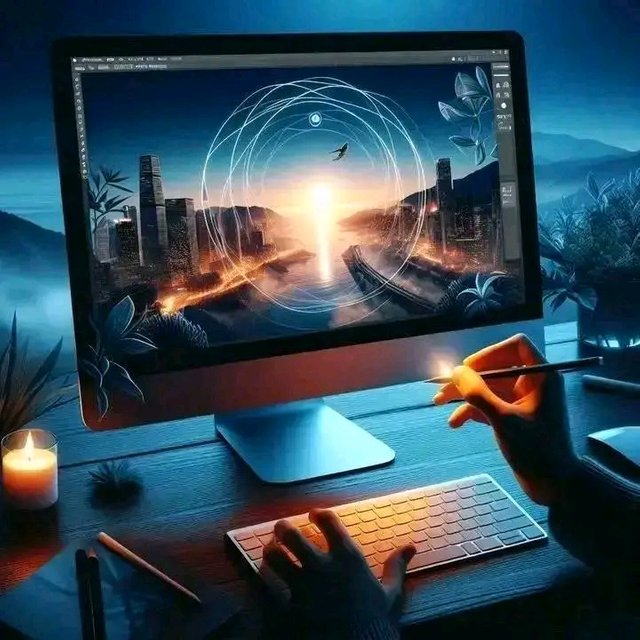🌐 Step Into the Browser: How to Build Immersive VR Experiences Online (No App Needed)
“I thought I needed a VR headset and expensive software to explore Virtual Reality — until I clicked a link… and suddenly, I was inside a 3D world.”
It was smooth. Immersive. Instant. No downloads. No installations.
That’s when I discovered the power of Web-based Virtual Reality (WebVR) — a fast-growing frontier where the web meets immersive tech.
In this article, I’ll guide you through how to build VR environments online using accessible web technologies, share practical tools and tips, and help you imagine what’s possible when Virtual Reality becomes just a URL away.
🌍 What Is WebVR?
WebVR refers to building Virtual Reality experiences that run directly in your web browser — think Chrome, Firefox, Safari — without needing native apps.
Thanks to technologies like WebXR API, A-Frame, and Three.js, you can create fully immersive environments that work across devices: phones, desktops, tablets, and VR headsets.
Why does this matter?
Because it removes friction.
No apps = faster access = higher engagement.
🔥 Real-World Uses of WebVR
WebVR isn't just a tech demo. It's already being used across industries:
Education: Virtual labs and historical walk-throughs
Healthcare: VR therapy and surgical simulations
Real Estate: 3D virtual tours of properties
E-Commerce: Virtual stores and product showcases
Gaming & Entertainment: Browser-based 3D games
Museums & Culture: Immersive online exhibitions
And all of these can run inside a web browser.
🧰 Tools You Need to Build WebVR Apps
You don’t need to be a Unity pro to build WebVR. Here are some beginner-friendly tools to start with:
- A-Frame
Built on top of Three.js
Lets you write VR scenes using simple HTML-like syntax
Great for beginners
<a-scene>
<a-box position="0 1 -3" color="#4CC3D9"></a-box>
<a-sky color="#ECECEC"></a-sky>
</a-scene>
- Three.js
A powerful JavaScript 3D library
Use for more advanced control of scenes, lighting, and interactivity
Excellent for custom animations and effects
- WebXR API
Connects your browser to XR devices (VR/AR)
Offers support for headsets like Oculus Quest and mobile VR devices
Enables full VR experiences with real-world interaction
💡 Tips for Creating Impactful WebVR Experiences
Here’s what separates a basic VR app from an unforgettable one:
✅ 1. Design for All Devices
Make your VR environment responsive. Ensure it works on mobile, desktop, and headsets.
✅ 2. Keep It Lightweight
WebVR lives in the browser. Optimize your assets (models, textures, images) for performance.
✅ 3. Simplify Navigation
Use intuitive controls — gaze, click, or tap. The smoother the interaction, the better the experience.
✅ 4. Tell a Story
People remember experiences that mean something. Build around a narrative — not just objects.
✅ 5. Test, Iterate, Improve
Test with users across different browsers and devices. VR bugs can ruin immersion fast.
🚀 Getting Started: Your First WebVR Project
Here’s a quick idea to try:
Virtual Portfolio in A-Frame
🎨 Use A-Frame to design a 3D space showcasing your projects.
👀 Add clickable objects that display your work.
📱 Make it mobile-friendly so users can explore with their phones.
You can host it on GitHub Pages, Netlify, or Vercel — all free.
💬 Let’s Talk: What Will You Build?
The best part of WebVR is how accessible it is.
You don’t need expensive gear, a massive dev team, or months of work.
You just need an idea and a browser.
So I ask you:
👉 If you could bring one idea to life in VR — what would it be?
Drop your thoughts in the comments. I’d love to see your creative sparks!
✅ Conclusion
Virtual Reality is no longer locked behind app stores and headsets. It’s right here — in your browser, waiting to be built.
Whether you’re a developer, designer, educator, or entrepreneur, WebVR offers you a new way to share ideas, stories, and experiences.
Start simple. Experiment. Share your world.
Because the next big thing in tech… might just be a link. 🌐
